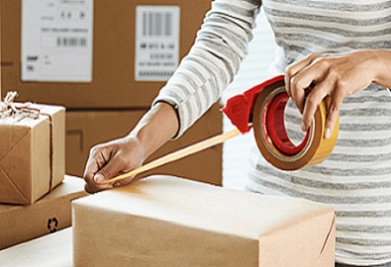Figures from the EU show more than 8 out of 10 UK citizens (83 per cent) made an online purchase in 2016 – the highest proportion of any country in the EU. According to the Office for National Statistics, this meant average weekly spending online reached £1 billion last December. When it comes to the associated environmental impacts, such as fuel miles, home delivery appears to compare favourably with traditional shopping models, at least on paper, says Myles McCarthy, director of implementation at The Carbon Trust: “Home delivery, done well, has the potential to substantially decrease emissions. If you assume no net increase in overall consumption caused by ease of delivery, then the alternative would typically be an individual making a single journey. So, in principle, you can replace multiple consumer car journeys with one effectively-routed van, which is modern, fuel-efficient, well-maintained and driven in an environmentally responsible way.” Taking vehicle emissions in isolation, home delivery seems a clear winner, agrees Richard Wilding, Professor of Supply Chain Strategy at Cranfield School of Management: “The environmental impact of home delivery is far better than you getting in your car. In fact, in terms of CO2, it is 20 times better (according to Herriot Watt University). In other words, you could have 20 missed deliveries before you create the same CO2 as getting in your car and driving to pick the item up. This is due to the van doing up to 140 drops on a route.”
This optimal scenario only applies, though, when home delivery is done well, which often it is not, argues McCarthy: “We see far too many old, inefficient delivery vehicles pumping out diesel fumes, under-loaded and poorly routed.” While many retailers operate fixed delivery route schedules, regardless of fluctuating delivery volume, large multinationals now plan routes dynamically, minimising mileage and optimising fuel efficiency.
Greening the logistics of home delivery is by no means only about vehicles, though – contents count too, explains Gilles van Nieuwenhuyzen, head of Stora Enso’s packaging division: “While most products ordered online come in somewhat renewable paper boxes, it doesn’t matter that the packaging is sustainable when a majority of its content is air, or even worse EPS-based fillers. Industry needs to work together with e-tailers to come up with innovative solutions for smarter, more size-optimised packaging that is also renewable.” To illustrate the impact potential of not packaging smarter, van Nieuwenhuyzen cites recent calculations in Sweden that showed lorries transporting e-business goods carry more than 100 million litres of air in just one year.
Supporting calls for greater environmental responsibility and accountability on the part of business, research also highlights growing public awareness, epitomised by the rise of the “conscious consumer”. A recent international study by Unilever revealed a third of consumers now choose to buy from brands they believe are doing social or environmental good. Add to this groundswell of green shopper sentiment a growing public love for electric and hybrid vehicles and it becomes tempting to ask whether environmental credentials could become a value driver or differentiator for delivery businesses.
Realistically, not at the customer-end, argues Mr McCarthy. “Even the most conscientious of consumers don’t tend to be experts in the nuances of logistics and supply chains – although they will notice the transparent stuff on the last mile, such as use of hybrid or electric light-goods vehicles.” For McCarthy, the real differentiator for delivery lies with retailers themselves, corporate responsibility is on the rise: “One of the biggest impacts companies can have on their supply-chain emissions involves working with their major transportation partners. We are seeing environmental criteria being introduced into procurement selection, in some cases making up almost 10 per cent of the total scoring. And this is a win-win situation, because logistics emissions are heavily linked to fuel costs.” A strong client-driven environmental agenda also informs the business case in packaging, observes van Nieuwenhuyzen: “We’re starting to see a shift among large e-tailers, from merely using sustainability to display environmental awareness to using it as an enabler for competitiveness. This includes using lighter, more recyclable packaging materials and developing automated ‘pick and pack’ solutions.”
The latter acts to reduce the risk of damaged goods, as well as costs associated with the “last mile” – a common profitability bottleneck for door-to-door deliveries. Overall, profitability on home delivery remains complicated for e-commerce, concludes Professor Wilding, who is also chairman of the Chartered Institute of Logistics and Transport in the UK (CILT). “When it comes to profits for many online retailers, the jury is still out – sales may be up, but profits are down. Many do not understand the true cost to serve. As a rule of thumb, I use 20 per cent of sales price for home delivery. So, unless you are selling very high-margin products, ‘free’ delivery is a myth, for which someone is paying.” With margins that tight, it might be the resource-efficiency and cost-saving benefits of environmental impact reduction that ultimately hold the key to green growth for home delivery.









